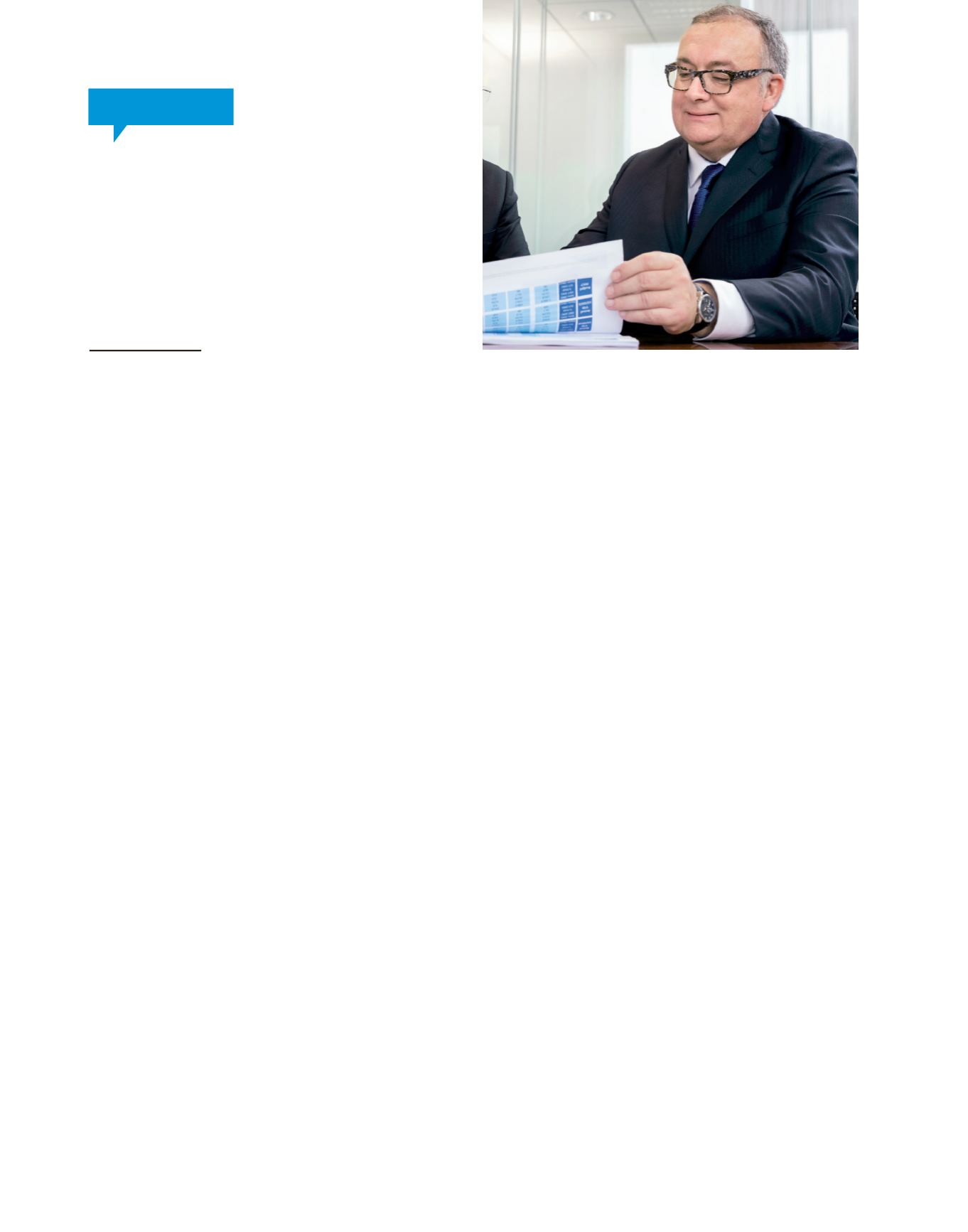

32 I
LISI 2016 ANNUAL REPORT
MARKETS & CHALLENGES
What is the current position
of LISI AEROSPACE?
_ Ten years after changing the status
of LISI AEROSPACE from subcontractor
to that of full-fledged designer, we are
now recognized as a major player, a
key partner for original equipment
manufacturers (OEMs). Innovation is now
part of our DNA: 10% of the division’s sales
revenue is achieved with new products.
Our efforts, which contribute to the
emergence of the technological bricks
of tomorrow, are part of the aviation
industry’s venture. The methodology we
deploy strengthens and professionalizes
our development capability by associating
the quality and cost control requirements
and the timeframes that characterize
our production. Two ver y successful
projects - ATL (Alternative Technologies
for Lightening) fasteners, on the one
hand, which offer a response to the
problems of lightning in airplanes with
a metal-composite structure and, on the
other hand, the automationof the laying of
blind structural fasteners (OPTIBLIND
TM
)
using LISI#OneSide - illustrate this new
approach.
QUESTIONS TO
JEAN-LOUIS COLDERS
CEO, LISI AEROSPACE
What role do the Best Cost Countries
play?
_ LISI AEROSPACE generates about 10%
of its production in 5 countries that meet
this definition: India, Mexico, Morocco,
Poland, and Turkey. The factories that we
possess there are gradually converging
towards the standards of quality and
efficiency that the Group has set for
itself. We are progressing nevertheless
ever ywhere in terms of automation
and robotics, so the overall economic
attractiveness of a market area is less
clear in the long run when you integrate
inflation, logistics costs and geopolitical
risks. Co-location strategies that promote
economic integration through production
and are, therefore, more sustainable,
guide most of our choices.
What are the prospects for 2017?
_ We intend to maintain a high level
of activity in the fasteners segment.
This market, which remains driven by
commercial aircraft, has experienced
cyclical adjustments in 2016 that were
directly related to the supply chain. In
North America, destocking movements
at Boeing have led to a significant drop
in volumes while in Europe, securing the
A350 has created a powerful momentum
on Airbus orders. We expect a rebalancing
in 2017. Our actions will focus on two
areas: productivity, with the deployment
of the LEAP* internal standard and
robotic-automation programs, and
penetration by new products.
In the structural components segment,
whose business is closely linked to
manufacturers’ production rates, the
stakes have not changed: ramp-up of
new programs, improved operational
p e r f o r m a n c e , p r o d u c t i v i t y a n d
transformation of the French site of
Bologne, in Haute-Marne, where the
Forge 2020 project (see page 25) is entering
its operational phase.
* LISI Excellence Achievement Program.
“We arenowrecognized as a leading
innovative player
, a key partner
for OEMs”
LISI AEROSPACE


















